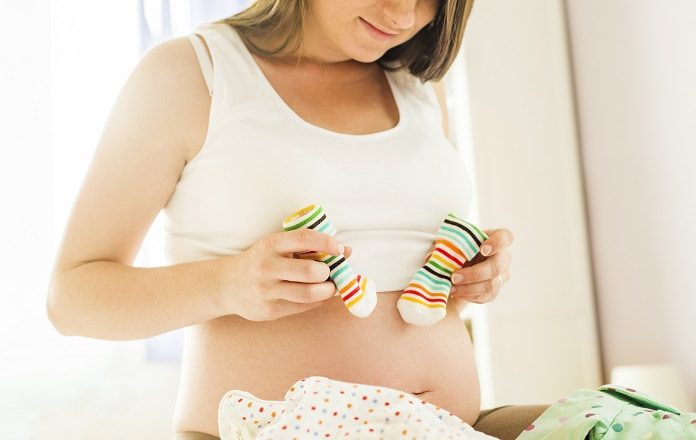In a recent study, Spanish researchers investigated whether children’s socks contained the endocrine disruptors BPA and parabens.
Could endocrine disruptors be present in the socks of babies and children?
Endocrine disruptors are chemical compounds that act like or interfere with, hormonal activity in the body.
Research has shown that endocrine disruptors in animals can cause early puberty in girls, decline in puberty in boys, abnormalities in male reproductive organs, increases in reproductive cancers, and immune and autoimmune diseases.
Because they affect the young, one of the greatest risks endocrine disruptors present is to pregnant mothers, babies, and children.
Some of the most common endocrine disruptors are bisphenol A, commonly known as BPA, and parabens. BPA is most commonly used to coat the inside of food and beverage cans.
Parabens are most commonly used as preservatives in cosmetics, pharmaceuticals, and personal care products.
Babies and children are primarily exposed to these endocrine disruptors through their diet.
BPA has been used in the manufacture of plastic bottles, and parabens have been used in the manufacture of teething rings.
Researchers have become concerned about the possible exposure of children to these chemicals through contact with the skin when clothes are made with synthetic fibers, such as polyester or nylon.
To determine whether infants or children were at risk for exposure to BPA or parabens, Spanish researchers at the University of Granada purchased 32 pairs of socks for infants aged 1-12 months and 12-48 months, from three stores.
The study results were published in the journal Environment International.
The three stores were a bargain store, a low-cost fast-fashion store, and a high-end department store.
The socks varied in price, composition, and color. They were stored in plastic bags until analysis.
Researchers performed a variety of laboratory analyses on the socks to determine the amounts of BPA and parabens present in the socks.
They also developed a formula to determine the amount of time the socks would on average be in contact with the children’s skin.
This formula helped the researchers to quantify the children’s exposure to endocrine disruptors.
The researchers detected BPA in 90.6% of the socks tested. In 35.4% of the samples, the EU limit of 0.1 ppm BPA in children’s toys was exceeded.
Fifteen socks contained more than 1000 ng/g. Socks from the bargain store contained 25 times more BPA than socks from the two other stores.
Researchers also tested for four different types of parabens and assessed the hormonal activities of the chemicals in the socks.
Three of the parabens were found in all sock samples.
Ten samples from the bargain store mimicked the activity of the female hormone estrogen, while six exhibited male hormone-blocking characteristics.
Those socks with the highest levels of BPA had the highest hormonal activity.
The study determined that socks can be a source of exposure for children to these chemicals, and the chemicals can be a source of hormonal-type activity.
Researchers recommend additional research into chemicals used in children’s clothing.
They also recommend regulations be put in place to protect consumers.
In light of these results, when shopping for clothing, look for dye-free, natural or organic fabrics to provide the safest clothing for babies and expectant mothers.
Written by Rebecca K. Blankenship, B.Sc.
References:
Freire C, Molina-Molina J, Iribarne-Durán L et al. Concentrations of bisphenol A and parabens in socks for infants and young children in Spain and their hormone-like activities. Environ Int. 2019;127:592-600. doi:10.1016/j.envint.2019.04.013
nih.gov. https://www.niehs.nih.gov/health/materials/endocrine_disruptors_508.pdf. Published 2019. Accessed June 14, 2019.



